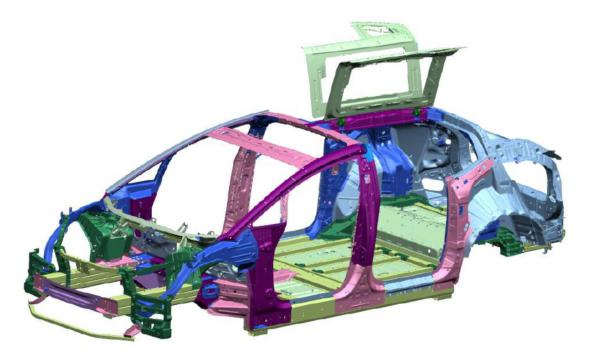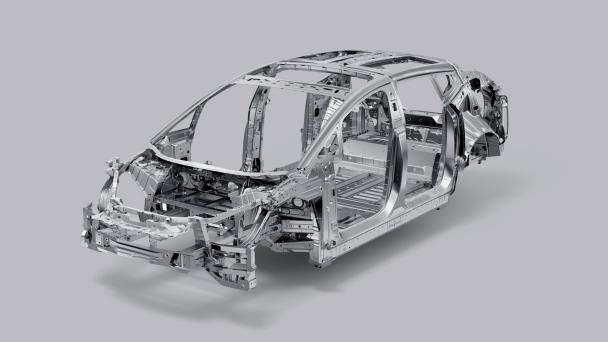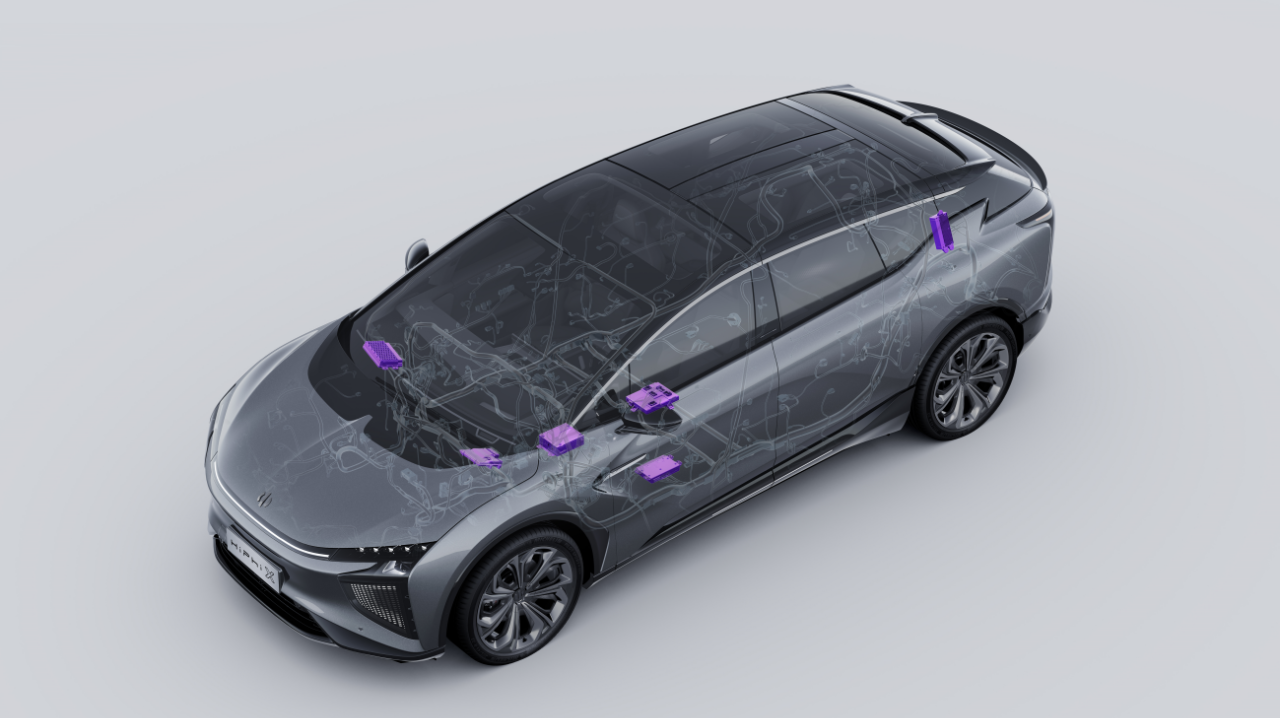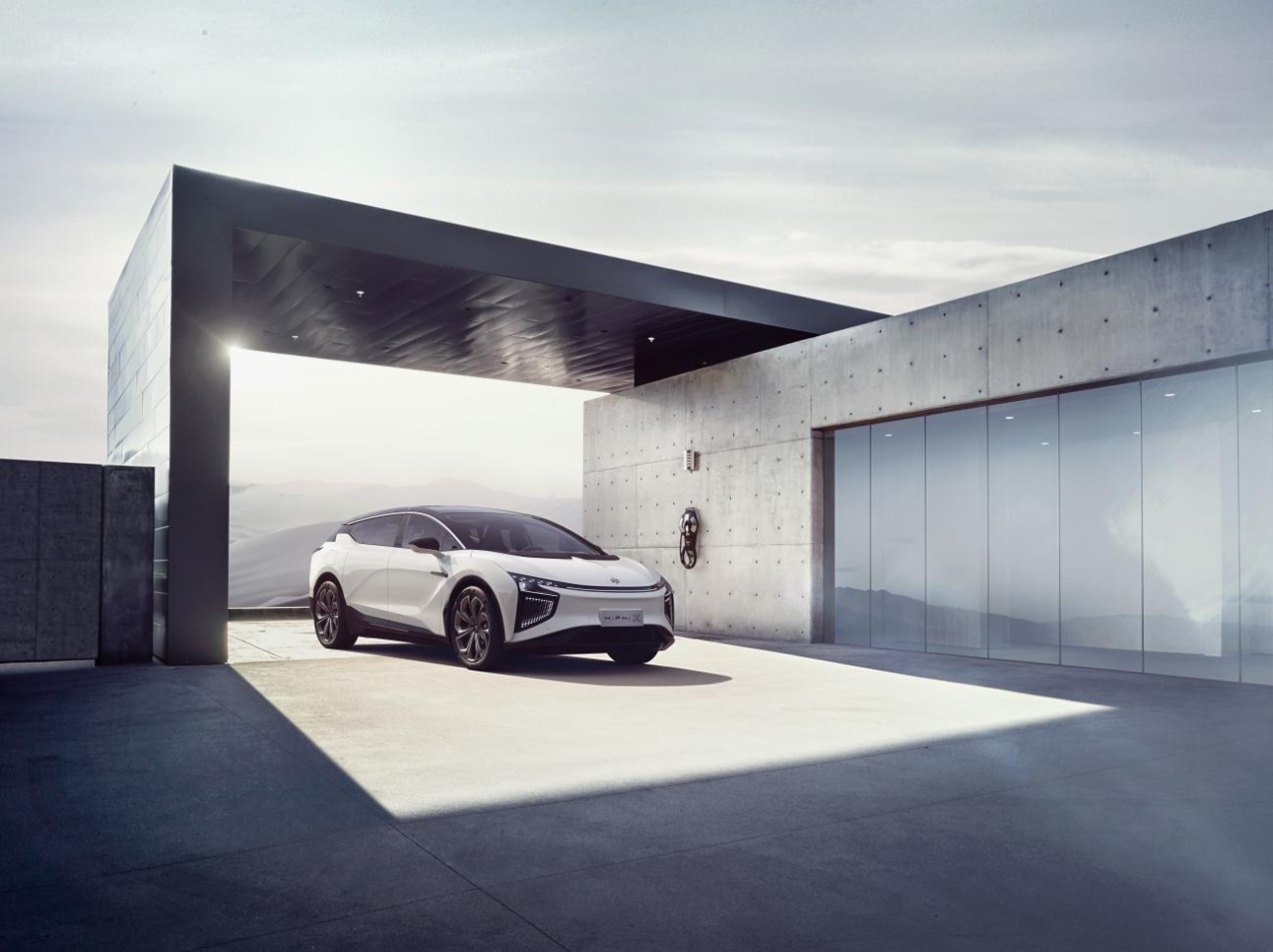Author: Qiu Kaijun
In the world of new energy and new brands, GAC Aion is a unique existence.
Its cheapest model costs ¥570,000 ($87,660), while the price of the six-seat main configuration starts at ¥680,000 ($105,089) and the four-seat version starts at ¥800,000 ($123,136). The estimated average transaction price is likely to exceed $100,000, which puts it in the global high-end market. Since its launch, the sales of GAC Aion often surpass those of Porsche, Audi, Mercedes-Benz, and Jaguar among electric cars with a starting price of over ¥500,000 ($77,000).
So why is GAC Aion so expensive? If we only look at GAC Aion’s cars at press conferences or exhibitions, we will find that it has paid great attention to “surface” decoration – dazzling and luxurious, making it easy to attract attention. However, considering GAC Aion’s recent establishment and price, buying this car feels like “face payment” or “intelligence tax”.

Regardless of market evaluation, GAC Aion has always been firm in its commitment to the high-end route since its first release. Instead of criticizing GAC Aion like many people do, we are more curious and watchful towards it and wonder: How can you dare to sell at such a high price? How long can you last?
We have hardly participated in GAC Aion’s press conferences because apart from orchestrated technologies, there isn’t much substance. For a new brand, what we care about is either the company’s strategy or the details at the front line.
Whether the front-line technical personnel have an excellent performance or not basically determines how far a company’s products can go.
Recently, Electric Vehicle Observer had the opportunity to communicate with GAC Aion’s core development engineers, which was a very interesting conversation.
The front-line engineers were straightforward and had a unique sense of rhythm when chatting. The first sentence was, “The car we want to make actually has nothing to copy! We need to develop everything ourselves!”
This made me understand the other side of the expensive “GAC Aion”.
There are few new companies in the industry that start from scratch for research and development, such as NIO. Therefore, it’s understandable why NIO is willing to re-promote the new ES8 five years later. On the one hand, the platform is self-developed and can be changed as one wishes. On the other hand, the first car developed from scratch carries dreams and hard work with unique emotions.Speaking of which, Gaohe is truly a super-large host plant configuration which was built from scratch, covering everything from appearance and interior design, to vehicle architecture, electronic and electrical platforms, battery packs+BMS, and intelligent cockpit. Basically, they have made an original autonomous R&D layout on this huge pile of things. This is basically the configuration of a super-large host plant.
The team we’re communicating with is the body engineering team. The team leader is engineer Yang Guopei, along with two other engineers Lin Dian and Zhou Jiafu. When we talk about technical and R&D processes, they exude a full sense of confidence that teams that modify and retrofit vehicles cannot match.
Gaohe’s first car was delivered in May 2021. If you count the complete development cycle of the first platform plus the first car, which includes complete vehicle testing in two winters and two summers, it took about 38 months. To be honest, this is very fast. The second car will be mass-produced at the end of 2022 based on the same vehicle platform. One car per year is the advantage of independent development. Although developing the vehicle platform autonomously is slower than launching a “knock-off car” in terms of time for the first vehicle to be released, it accumulates strength until it can be used for innovations in vehicle uniqueness, safety, and future model expansion.
Gaohe’s parent company, Human Horizons, had several major R&D entities that applied for more than 1,500 patents from 2018 to 2022, with a high proportion of invention patents and nearly 800 granted patents. This number is only average in today’s new forces, but if it is considered that it was achieved in just four years, the annual growth rate is still very encouraging.
So just in terms of technical and R&D capabilities, Gaohe Automotive can indeed create a stylized design that no one in the industry has achieved nor can currently copy, creating an unprecedented intelligent interactive experience, and still convincing “value-oriented” consumers to make rational decisions with some impulse buying.
Scissor Doors: The Ultimate Scene
When it comes to Gaohe Automotive, many people immediately think of the scissor doors on the Gaohe HiPhi X.

If you don’t experience it carefully, it’s easy to assume that the scissor doors are just for show, good-looking but not easy to use. After all, even the door handles are gone: not hidden, but completely eliminated. However, in reality, this original design of scissor doors provides a very unique entry and exit experience.First of all, the gull-wing doors of HiPhi X, internally referred to as “NT doors” during engineer communication, with NT being the abbreviation for “No Touch,” meaning they are contactless. The HiPhi X gull-wing doors do not have handles, and passengers can enter the car without contact through three manners: a smartphone, a smart key, or facial recognition on the smart B-pillar.
Secondly, the gull-wing doors are different from falcon wing or butterfly doors. HiPhi X has six doors that can be opened and closed individually or in combination to provide different entry and exit modes for different scenarios.
The design and development of HiPhi X’s gull-wing doors are based on usage scenarios, and this approach is emphasized by the engineers as “scenario-based design philosophy.”
During communication, I became more certain that the engineers had created an original way to open the doors. Their ideas and simulations for different scenarios, as well as their testing, are far more extensive than what you or I may imagine. Here are a few examples:
For instance, the six doors are designed to be opened independently, especially the back top door and side doors, which are segmented and can open separately. In the event of an emergency or accident, the side or top door that opens first may become a valuable escape route. The doors also have emergency physical pull ropes that can be used to physically open the doors in extreme cases.
I often see people on forums asking, “What if it starts raining and the doors leak?”
Of course, the engineers considered this scenario among the first. The back top door typically opens along with the side doors, but it can be linked to the car’s rain sensor. Once the sensor detects rain, the top door will automatically choose not to open, while the side door opens to avoid passengers getting wet.
There are also a series of questions to consider: What if the garage ceiling height is low? What if someone stands next to the door? What about cliffs or curbsides? The doors have different intelligent opening and closing strategies and preventive measures through sensors on the doors and car body.
Additionally, the normal time the gull-wing doors take to automatically close is 3-4 seconds. However, passengers are bound to be in a rush sometimes, and during those times, they can manually speed up the opening or closing of the doors.
“When we were designing the NT door system plan, we developed hundreds of engineering solutions for door opening and closing linkage and scenarios. The goal was to address the diverse customer usage scenarios. Customers’ pain points for entering and exiting the vehicle are different in practice, so how can we use the best solutions to solve their problems?” Yang Jun said.# High-end Design and Extreme Testing for HiPhi X Doors
Not only does HiPhi X use “scenario-based design,” but also in the testing and verification of car doors, it needs to return to the scenario and consider some extreme situations.
For example, the rainy scenario is particularly strict for door testing, “when testing, our requirement is that the car door can withstand a test of 80 millimeters of heavy rain per minute.” How bad is this rain? It is more than twice the largest rainfall on earth recorded by humans.
There are even more peculiar scenarios that the engineers have considered. Lin Dian, an engineer, told me that “we also envisage scenarios where the user is not driving on level ground, for example, in Chongqing, where the car may be inclined from left to right or from front to back. So we test and verify the car from various angles.”
There are no ready-made suppliers who can help HiPhi X with door testing for these unique designs. HiPhi X had to design the test plan for the car doors, even customizing equipment and setting testing standards.
HiPhi X has designed a specialized test bench for the gull-wing doors and performed 100,000 fatigue tests on side doors and 50,000 fatigue tests on gull-wing doors to ensure the robustness of the opening and closing function of the car door.
“Ordinary door experiments are probably four environmental conditions of high temperature, high humidity, low temperature, and room temperature, plus glass at the top, middle, and bottom, which add up to over a dozen conditions. HiPhi X’s gull-wing door has over 100 different test conditions,” said HiPhi X engineer Zhou Jiafu.
I have talked so much about doors not because I am a “door enthusiast,” but because it is so extreme that it seems unbelievable. I also need to mention the design of the sealing strip on the door edge. For the bending method of the seal strip with a double water guide groove, they tried it countless times, rain, snow, and fallen leaves. In the worst case, one was blocked, and the other could still guide water.
Then, of course, safety must be discussed.
HiPhi X designed an unprecedentedly complex car door to meet diverse needs for opening the door. Especially for the gull-wing door, which has a large opening and no top side beam between the B-pillar and C-pillar, how can the rigidity of the car body be ensured? How can passenger safety be guaranteed in a collision?
First of all, HiPhi X engineer designed the front structure of the HiPhi X body specifically to transfer more frontal loads to the door sill area, protecting the passenger compartment and the bottom of the car body’s battery pack.
 ## Car Body Reinforcement for HiPhi X with Intelligent Electric Doors
## Car Body Reinforcement for HiPhi X with Intelligent Electric Doors
Secondly, in order to resist the impact of the scissor doors on the car body structure, Gaohe has strengthened the B-pillar and C-pillar of the scissor doors to form the B-ring and C-ring structure respectively. Furthermore, a closed loop structure is formed with the B-ring and C-ring through the use of a crossbeam. The crossbeam is made of a combination of hot-formed steel and ultra-high-strength steel to resist bending deformation upon impact.
Thirdly, during vehicle operation, the scissor doors are in a closed position. The top doors of the scissor doors are specially designed with a dual-lock structure that locks onto both the B-ring and C-ring, becoming part of the collision force transmission path to protect passenger safety in the event of a collision.
Fourthly, the trunk of the HiPhi X (referred to as the D-ring by Gaohe engineers) is a combination of a triangular C-ring, which is stronger than a conventional C-ring and can withstand impacts from front to rear.
As a result of these measures, HiPhi X has received a C-NCAP five-star rating for collision safety and was awarded the national “Top 10 Car Body” award that year.
In order to provide users with a rich and safe door opening and closing experience, Gaohe has spared no effort in introducing intelligent materials and structures to ensure an intelligent and ceremonial door opening and closing experience.
The scissor doors are indeed one of HiPhi X’s selling points, and Gaohe has spared no cost in achieving this selling point.
Integration of Intelligent Electric Doors with Car Body
In fact, the fundamental difference between Gaohe’s scissor doors and other car doors is its intelligence.
In addition to the visible doors, the scissor doors are also equipped with an electric motor for opening and closing, 12 radar sensors, a rain gauge sensor, and an intelligent entrance and exit system consisting of a car body domain control calculation platform. Only this system can support the door opening and closing functions according to various scenarios.HiPhi X has the feature that allows the automatic closing of car doors by stepping on the brakes, and the wing doors do not open when it is raining. Is it possible to achieve such functions in traditional cars?
Basically impossible.
In the former, brakes are brakes and they will not deal with the matter of car doors. In the latter, opening the door used to be a mechanical device, which has no idea whether it’s raining or sunny outside.
To achieve the intercommunication of information, coordinated decision-making, and unified execution of various parts of the vehicle, it must be based on a highly integrated automotive electronic and electrical architecture. Therefore, HiPhi has set up a role of “Intelligent Access Product Manager”, whose role is similar to that of a product manager in the Internet industry.
The traditional automotive electronic and electrical architecture is very decentralized, consisting of individual ECUs (electronic control units) and complex wiring harnesses. However, with the increasing demand for automotive intelligence, the improvement of automotive chip capabilities, the advancement of automotive communication technology, the electronic and electrical architecture is becoming more centralized, gradually evolving into domain control, body domain controllers, and even central vehicle computers.
The electronic and electrical architecture of HiPhi X – H-SOA (HiPhi Service Oriented Architecture) Super Body Electronic and Electrical Architecture divides the entire vehicle into six computing platforms to manage, namely: the entertainment domain computing platform IDCM, the intelligent driving domain computing platform ADCM, the power and chassis domain computing platform VDCM, the body domain computing platform BDCM, the central gateway CGW, and the T-Box communication computing platform.

In traditional cars, the brakes, doors, and rain sensors, which have nothing to do with each other before, are all related to the body domain computing platform. This platform access all the sensing information of the body domain, and can quickly make decisions and provide solutions after receiving the signal of the passenger’s instruction, and immediately transmit the instruction to the corresponding hardware execution mechanism to execute the instruction.
The smart opening of car doors is just one of the advantages of HiPhi H-SOA. It can integrate the information of the whole vehicle, analyze and execute faster, and can also allow engineers to develop new functions faster and easier with OTA.
In terms of wing doors, it seems that consumers have lost the door handles and direct control. In fact, they have gained a smart “assistant” to help them enter and exit the car more comfortably and safely. This electronic and electrical architecture and intelligent access without door handles have also been implemented on HiPhi’s second flagship, HiPhi Z.This is the benefit of H-SOA, which can mobilize all hardware and software, provide services according to different scenarios, and even create new scenarios. Just like the physical buttons removed from Apple phones, it opened the door to the entire mobile intelligent era for consumers.
Material “Players”
Since the popularization of electric vehicles, in order to pursue longer mileage, automakers have become increasingly radical in lightweighting, with many using carbon fiber and all-aluminum bodies as selling points.
The white body of the HiPhi X by Human Horizons is a steel-aluminum hybrid, with aluminum alloy components accounting for approximately 36%. “The golden ratio of aluminum alloy used by mainstream luxury brands such as Audi, Mercedes-Benz, etc. is between 30% and 50%. The industry has a relatively consistent understanding of the overall material and body.” said the automotive body material engineer of Human Horizons.
“We have both steel and aluminum. Aluminum is not only a simple sheet metal part, but we also use aluminum extrusions, aluminum die-casting parts, and many different materials and forming methods such as low-pressure die casting and high-pressure die casting,” said the engineer. The principle of HiPhi’s body material selection is RMRP- Right Material Right Place, using suitable materials in appropriate locations.
Steel is still the main material but is also divided into hot-formed steel, ultra-high-strength steel, high-strength steel, low-carbon steel, and others. HiPhi’s principle is that materials are not superior or inferior, there is no large amount of stacking of so-called “good materials,” but material utilization should be maximized – this is a great test of an engineer’s ability. For the area where people sit, ultra-high-strength steel and hot-formed steel are used to ensure the safety of passengers; low-carbon steel looks ordinary but has “very good ductility, and only low-carbon steel can make the shape matching the taillights we need.”
Different aluminum alloy components should also be used in different places and be designed accordingly. For example, even though they are both extrusions, Human Horizons independently designed an octagonal extrusion for the collision crumple zone to achieve maximum energy absorption efficiency. In the sill area, Human Horizons also made a special cross-sectional design based on force transmission pathways and extrusion molding technology balance.
“The length of this sill is about 2.2 meters, which, as far as I know, is the longest single part in the industry,” said the engineer of Human Horizons.Using aluminum die-casting parts, Gaohe places them in complex positions such as the front shock tower and rear longitudinal beam. This method can not only reduce the previous more than ten components into one, but also maintain the strength and rigidity.
“For the hot aluminum alloy integrated die-casting technology in the industry, Gaohe has completed technology development and reserves, and has been used on existing models on a small scale. It will also be used on subsequent models on a large scale, which will further improve the manufacturing efficiency of Gaohe’s body and the riding experience of users,” said a spokesman.
Finally, looking at the HiPhi X white body, it achieved the characteristics of light weight and strong torsional stiffness. The whole vehicle lightweight coefficient reached 2.4, which is more than 30% lighter than an all-steel body. Under the premise of a large size and wide butterfly doors, compared with the similarly shaped body of Tesla Model X, the HiPhi X body has a torsional stiffness that is 25% to 30% higher.
In addition to the proficiency of the body material, Gaohe also has extraordinary competence in accessory materials. Regarding NVH, which is particularly important for luxury car models, Gaohe has jointly developed acoustic foam with Dow Chemical to apply it to seven key locations. Its sound insulation efficiency is more than twice that of traditional sound insulation blocks. “Our overall NVH level ranks among the top in the same level of luxury cars,” said Yang Guopei.
In conclusion, Gaohe’s entire vehicle development has achieved extreme accomplishments, regardless of cost.
New Car, New Luxury
The end of the Stone Age was not because we ran out of stones. The end of the fossil fuel era will not be because we ran out of oil, but because intelligent electric vehicles will create functions and experiences far superior to those of fossil fuel vehicles.
In fact, with our observation in the electric vehicle industry and continuous validation, these brand new and intelligent electric vehicles have already become completely different new cars. Among these buyers of new cars, there will naturally be various different needs, such as for transportation, commercial use, experience or show-offs. Gaohe is the forerunner of the high-end segmented market in new cars.
From the very beginning, Gaohe had a clear vision and stayed true to it. This is also the reason why Gaohe’s expensive cars are still selling well and can continue to go on.
This article is a translation by ChatGPT of a Chinese report from 42HOW. If you have any questions about it, please email bd@42how.com.
